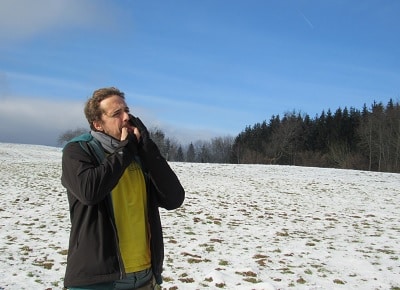Dozens of traditional cultures use a whistled form of their native language for long-distance communication. You could, too.
By Bob Holmes 08.16.2021
La MITI a soutenu ce projet dans le cadre de l’appel à projets 80|Prime en 2020.
Porteur : Julien Meyer
Tourists visiting La Gomera and El Hierro in the Canary Islands can often hear locals communicating over long distances by whistling — not a tune, but the Spanish language. “Good whistlers can understand all the messages,” says David Díaz Reyes, an independent ethnomusicologist and whistled-language researcher and teacher who lives in the islands. “We can say, ‘And now I am making an interview with a Canadian guy.’”
The locals are communicating in Silbo, one of the last vestiges of a much more widespread use of whistled languages. In at least 80 cultures worldwide, people have developed whistled versions of the local language when the circumstances call for it. To linguists, such adaptations are more than just a curiosity: By studying whistled languages, they hope to learn more about how our brains extract meaning from the complex sound patterns of speech. Whistling may even provide a glimpse of one of the most dramatic leaps forward in human evolution: the origin of language itself.
Publication commentée dans cet article :
Meyer, J. (2021). Environmental and linguistic typology of whistled languages. Annual Review of Linguistics 7, 493-510.’
Prochaine publication en cours :
Meyer, Magnasco, Reiss (2021) The Relevance of Human Whistled Languages for the Analysis and Decoding of Dolphin Communication, Frontiers in Psychology (Language Sciences), doi:10.3389/fpsyg.2021.689501




